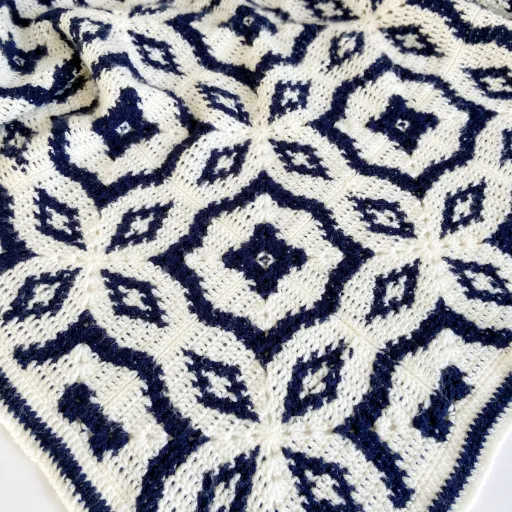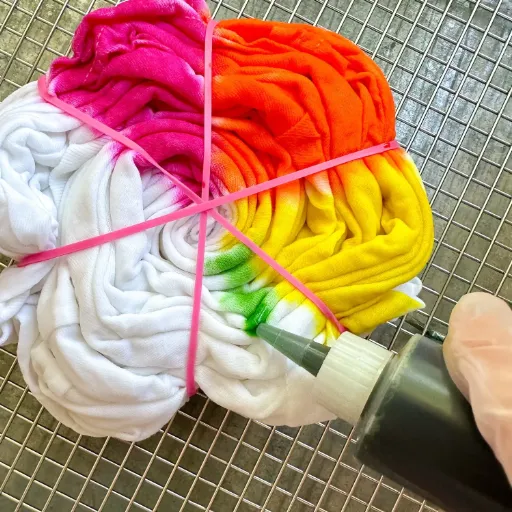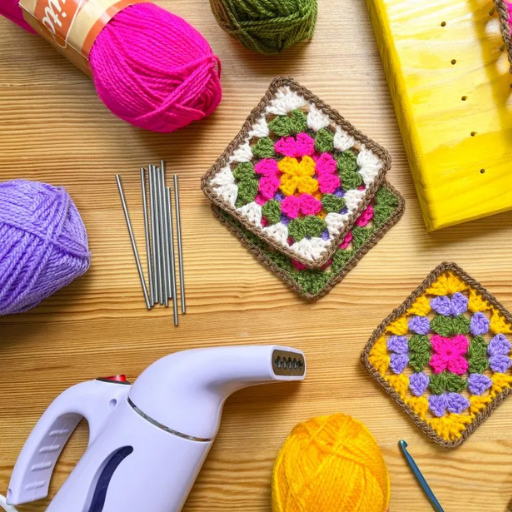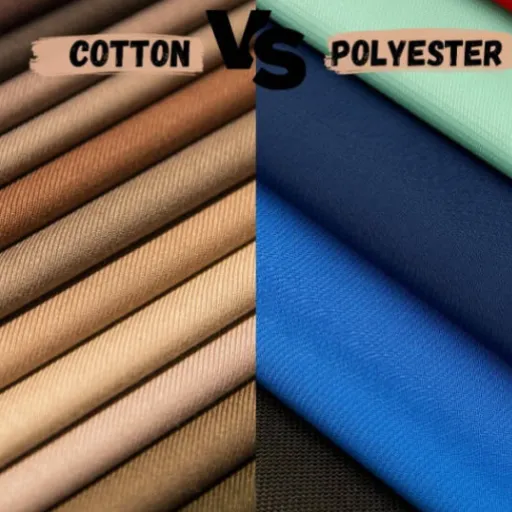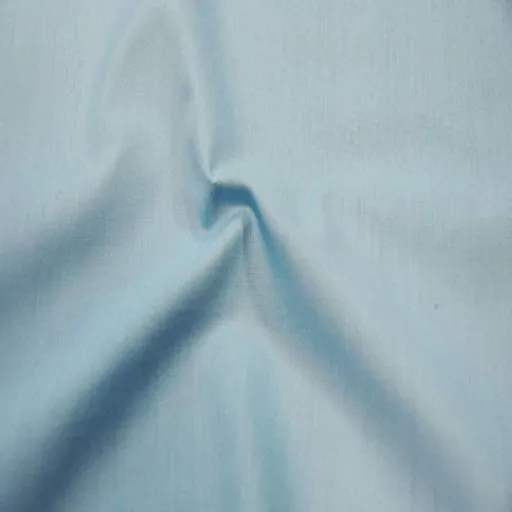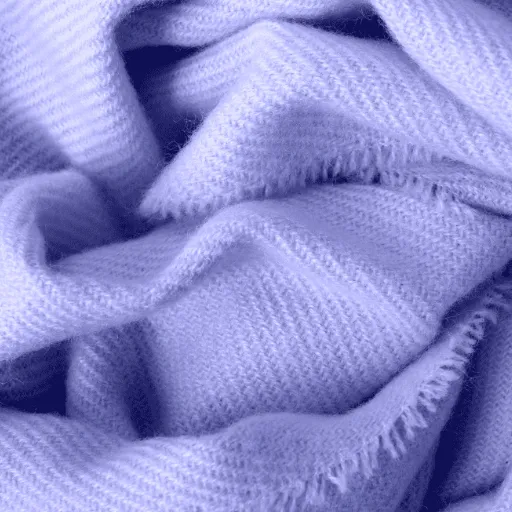Polyester and acrylic fabrics are not so different from each other. These two fibers have their uses in almost every sphere of human activity, such as fashion and clothing, household articles, industrial products, and outdoor gear. So how come, how long can you expect them to last, how good will they feel, what about how well do they endure moisture of such fabrics and last but not least how much time should be spent on caring routine? This text has been written with the primary intention of providing the reader with detailed information on the differences between the materials: polyester and acrylic, making it easier for the reader to decide which material is primarily suited to their needs. Whether you are searching for the best material to make clothes, do some interior decoration, or create outdoor gear, we will try to reveal the most important dividing lines to help you choose your preferred option.
Properties of Acrylic and Polyester
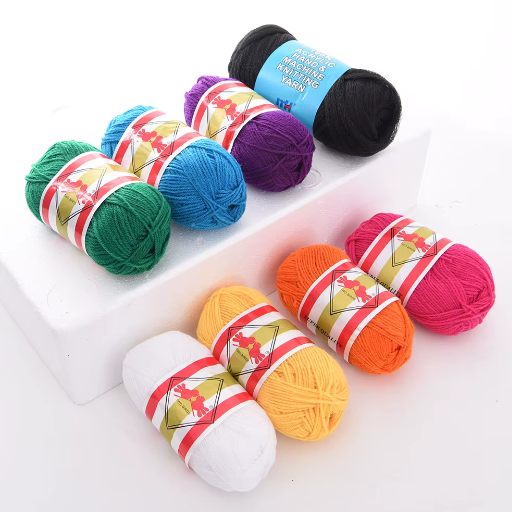
Durability
Unlike polyester, acrylic lacks durability to some extent – it displays easy pilling and can be disrupted due to heat exposure, such as from the sun, which suggests that acrylic will not last as long as polyester under any conditions. Unlike acrylic, polyester is a strong, flexible fabric that resists rubbing, making it an ideal choice for long-lasting purposes.
Comfort
Such a background is generally suitable in cold environments, making acrylic desirable for the warmth and comfort its texture offers. For instance, polyester is extremely soft and lightweight. It can tend to be less breathable than its natural counterparts.
Moisture Resistance
Polyester by nature is moisture management and quick drying and is therefore suitable for such activities as outdoor activities and sports. Also, it is worth noting that although acrylic materials are not resistant to moisture, the more commonly known materials are. This results from the characteristic of acrylic materials, which includes water, and hence they are not effective under wet or humid conditions.
Care Requirements
Acrylic fiber is a bit harder to manage, more so within the contexts of washing and drying. On the other hand, polyester tends to be more user-friendly as it can be thrown into the laundry in a washing machine, in addition to being hard to wrinkle, shrink, or lose shape.
Texture and Feel
Polyester and acrylic are often compared in terms of their texture and feel, which can change their use. Usually, Polyester is silkier due to its plain weave and chemical treatments making the feel of its yarn quite varied, more often than not it is soft to touch but it can also reach the level of being slightly rough. In such instances, where wearability and aesthetic appeal are major considerations, such as casual wear and furniture, polyester is the most favorable material to use. In contrast, often the acrylic fabric texture mimics that of other natural fibres, including woollen ones, some of which offer a much warmer and softer feel. From sweaters and scarves to even throws, it does most of the snuggly outfits the honour. Even advances in current textile developments on the fibers have ensured there is room for flexibility in the area of both material kinds, and have enabled the modification of the feel in ways that can fit different consumer preferences.
Weight and Durability
To recommend a suitable material for the job at hand, ease of use and resistance to impact must be considered. While Polyester is considered a light fabric, it withstands a considerable amount of force and can be stretched almost infinitely without tearing. Being quite sturdy, it can be assured that heavy-duty applications such as outdoor gear and industrial carpets can be tackled without too many issues. Even the most everyday textiles wear off slowly. Therefore, it is more prudent to design overalls that the fabric can withstand without getting damaged. Acrylic, as a material, is less tough than its counterparts, but its lightness and excellent thermal properties make it efficient during installation. Past findings have indicated that in the evolution of polymer blending, as well as the application of paint films, numerous breakthroughs with polyester and acrylic have been achieved. This means that these two textile materials will be affected less by external factors such as wear and tear, ultraviolet rays or the presence of excess moisture.
Key Differences Between Acrylic and Polyester
| Parameter | Acrylic | Polyester |
|---|---|---|
| Durability | Less durable | Highly durable |
| Weight | Lightweight | Slightly heavier |
| Thermal Insulation | Excellent | Moderate |
| Moisture Resistance | Absorbs some moisture | Water-resistant |
| UV Resistance | Moderate | High |
| Stretch Resistance | Some stretch over time | Highly stretch-resistant |
| Softness | Softer texture | Firmer texture |
| Longevity | Shorter lifespan | Longer lifespan |
| Cost | Relatively higher | More economical |
| Environmental Impact | Hard to recycle | Easier to recycle |
| Ideal Applications | Insulation and fashion textiles | Outdoor gear and industrial use |
Common Uses of Acrylic and Polyester
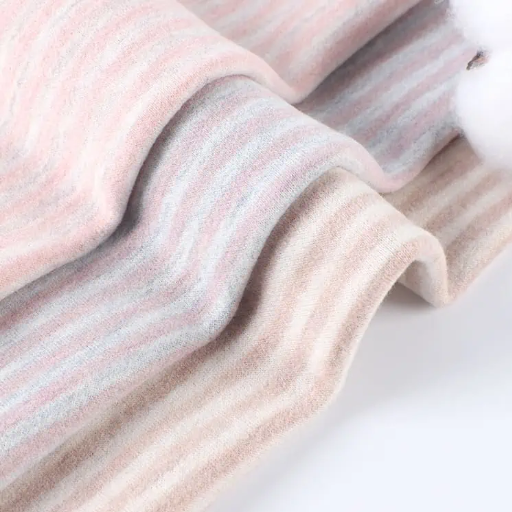
Soft, man-made fibres are often used in certain garments, such as sweaters, scarves, and socks, due to their softness and ability to resemble wool. At the same time, household products like curtains and carpets are made of these uniform fibers so that they are warm and look good, even if made of synthetic stuff. When it comes to strength and rigidity, the material of choice would be polyester. It finds wide use in the manufacture of active wear for aerobics and jogging, but it is most commonly associated with wet sports such as scuba diving and beachwear. Back packs are commonly made of polyester, as it is durable and waterproof. Polyester is likewise very effective when dry, as it is versatile in both industrial and domestic environments. It is a resistant fabric with high burst resistance and fine central links, and it is a silent wear due to the dressing.
Applications in Clothing
Sportswear and Activewear
Polyester increases its importance in sports gear due to its superior absorbency compared to water. Thus, vests that are used when you sweat more already have such in them which absorb sweat to the outside to keep your skin dry. According to the research conducted, 60% of the global sportswear production incorporates polyester due to its numerous advantages, such as durability and resource-saving properties.
Outerwear
The consensus on Polyester is that it does not allow for firmness, moisture, or exposure to the sun, and this is why it serves best in outdoor, structured clothing like jackets, windshields, and anoraks. Exterior garments of the high activity are also found I the shelves that are made from Polyester and contain some water repellent finishes hence all those become of great importance in the times of harsh atmospheric conditions.
Casual and Formal Wear
The other use of Polyester is most often combined with cotton or wool, where the fabric falls into the category of casual or formal, and is also used to provide strength, enhance resistance to creasing, and reduce wrinkles. For example, with the shirt’s purpose in mind, the fabric used is a blend of 65% polyester and 35% cotton. This mostly means that when Manson and Irons cannot remove the wrinkles, they will still allow the attire to be suitable for everyday use.
Loungewear and Undergarments
Polyester microfibers, for example, are soft and can stretch, making them commonly used in loungewear and underwear outfits. These sorts of materials enhance garments and allow them to move along with the body, which essentially results in the relaxed indoor clothing and sexy lingerie.
Fashion and Fast Fashion
One of the reasons why this textile is so favored is its affordability and simplicity in coloring. According to statistics, approximately 52% of fabrics worldwide are made of polyester, making it understandable why cost-effective clothes are often made of polyester.
Workwear and Uniforms
It is in the area of industrial and other uniforms where we see the benefits of polyester and its resistance to tensile, tear, and abrasion under friction. It is strong and chemical-resistant and therefore can be used in places like industries, clinics, and even at hotels and restaurants for a very long duration.
Home Textiles and Upholstery
In terms of home textiles and furniture, the most popular materials are those made of polyester, as it offers a range of features that make it both durable and long-lasting. It is frequently found in things like curtains, rugs, furniture, upholstery and bed linen and curtains and rugs in house interiors. It can even be used as bedding. In particular, the provisions for minimal fabric care fabrics are great as they allow the implementation of such fabrics more. Besides, recent fiber technologies have in fact improved the hand of polyester that it can be used to create fabric with a plush soft feel and yet appreciably tough. Environmentally friendly trends also involve the use of improved polyester based on post-consumer PET plastic materials, which is able to meet the current growing consumer awareness for green products. The models also predict that the policy of urbanization and the aesthetic value of housing will increase the demand for polyester in the fabrication of home textiles.
Industrial Applications
Automotive Industry
The automotive industry is one of the primary sectors that consume a significant amount of polyester for seatbelts, airbags, interior upholstery, and tire reinforcements. That said, the consumption of polyester fibers in automotive applications, as indicated by research figures, is expected to register a 5% CAGR between 2023 and 2030, driven by the increase in vehicle manufacturing and the adoption of lightweight and fuel-efficient materials.
Construction Materials
Polyester can be found in roof coverings, geotextiles, and insulating materials, among other applications – primarily due to its strength and resistance to moisture and pests. In particular, geotextile uses are likely to grow by 7% per year thanks to the demand in emerging economies for infrastructure.
Packaging
In the area of food and drink packaging, there are numerous applications for polyester, especially PET, making it the most predominant form. It also offers various benefits, such as great durability, ease of recycling and resistance to aggressive environments. There are records to support the fact that the global production of PET, a popular material, surpassed 80 million in 2022 alone, with almost 70% contributed by packaging.
Textile and Apparel
Although in reference to the textile industry’s central role, polyester dominates the world market due to its affordability, anti-wrinkle properties, and, most importantly, its resistance to wear and tear. Latest statistics suggest that in every yard produced globally, approximately 55% of the polyester fiber is distributed to the world population.
Electronics
Polyester films perform a crucial role in such areas as electrical insulation, flexible circuits, and LCDs, owing to their outstanding dielectric and thermal conductivity properties. The fields listed have been developing actively, especially with respect to the electronics sector, it is projected that the world will require $6.5 billion of polyester film by 2027.
Healthcare
Polyester fibers are widely used in the medical sector, primarily for applications such as surgical gowns, masks, and medical tapes. Nonwoven polyester has emerged as a crucial material in the manufacture of disposable protective wear, driven by the increasing demand for hygiene, a trend that is expected to continue after 2020.
How to Choose Between Acrylic and Polyester?
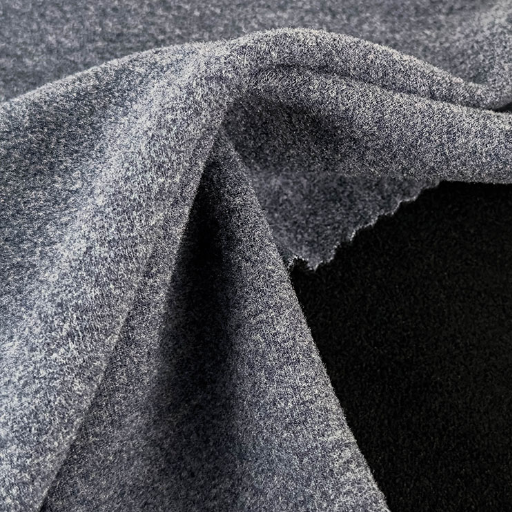
In order to aid in the in between acrylic and polyester, the end user ferrous on the material properties most relevant to the situation:
Durability and Strength
Polyester Woven Labels provide the most durability, superior to any other fiber, as they can not be stretched out. This material is ideal for users who frequently abuse products or those who are exposed to specific environmental conditions, such as air, activewear, upholstery, or industrial filters designed to capture fine dust.
Softness and Warmth
Acrylic, in contrast, provides the texture which is slightly softer and more akin to natural wool. It is a better material to use for clothing that requires both styling and warmth barriers, such as in making sandals and pants.
Moisture Resistance
Some interesting properties of polyester are that it is highly resistant to moisture and dries quickly, which makes it an excellent choice for sportswear or wear during rainy days. Acrylic, although, with moderate level of moisture absorption and being moisture wicking applications less effective.
Cost and Availability
Acrylic is often used in place of more expensive substances and falls within the lower price bracket compared to polyester. The argument that could be used in pricing polyester for specific applications is coverage in a wider spectrum of functional use.
Considering Your Specific Needs
It is crucial to consider the anticipated usage situation when deciding between polyester and acrylic materials. Polyester holds an upper hand particularly in demanding treatment such as sportswear or technical fabric, and even ordinary garments are required to preserve its working excellence and quality, because it has a higher moisture uptake, tensile strength, and an increased UV resistance level when compared to conventional high heat resistant materials, and it is quite durable. In contrast, acrylic is pocket-friendly and has a wool-like feel, which can complete the aim of achieving a fashionable appearance or warmth in garments such as cardigans and knee wraps, with lower bursting tendencies.
Additionally, recent developments in the textile industry have led to the use of a hybrid composition of polyester and acrylic, allowing manufacturers to leverage the advantages of both materials. The novelty offers increased comfort in use, striking a balance between long wear and investment suitability for many applications. Additionally, it is essential to select materials according to the specific requirements of each application to ensure optimal results and economic efficiency.
Acrylic or Polyester: What is Better for Clothing?
When choosing between polyester and acrylic for clothing, specific properties must be analyzed, as each fabric’s properties should ideally meet the needs of the finished goods. One of the best and unique characteristics of polyester consists in the following: it can withstand a lot of wear and has a tendency not to draw moisture. It is also less prone to shrinking and wrinkling. Thus, casual wear, outerwear, and sportswear that are pretty heavy in responsibilities serve as good contexts for polyester. Nevertheless, acrylic has its place as an excellent brand of cloth with a mild feel; additionally, the material is as light as a feather and possesses woolen characteristics. It is no wonder that sweaters, woolen stoles, woolen panties, gloves, and many other clothes made from acrylic and treated with these solutions.
Recent advancements in the textile manufacturing process have enabled the creation of a wide range of products and designs made from these textiles. Single components, e.g. make of the textile in a polyester garment can also be enhanced by incorporating recycled polyester fibre to improve breathability, and other such protection factors into the same production.” Other significant improvements can be seen in the case of acrylic fabrics, which are now enabled to perform much softer to the touch and pill-free fibers. Still, other practical measurements, such as the care required, as well as the nature of certain materials and silk constraints, can be quite harmful and costly, all of which help in eliminating certain fabrics while selecting others.
In the end, the choice of polyester or acrylic is selective based on the design features, application and the end use of the garment. Material science decisions can be made when manufacturers of clothing and textiles consider such factors in totality and make a decision that best satisfies the consumer.
Environmental Impact of Acrylic and Polyester
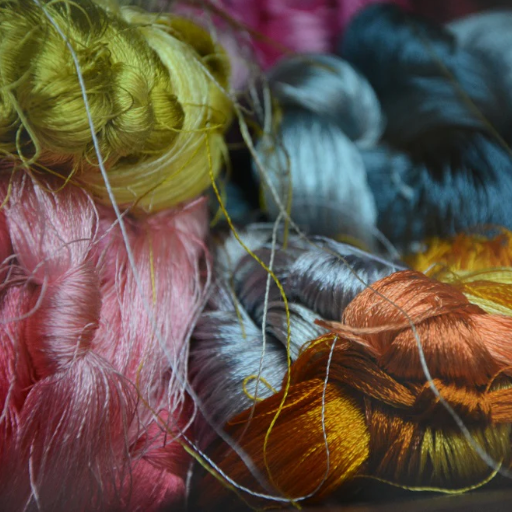
The material properties of acrylic and polyester as textile fiber fabrics show high environmental effects due to their production and in use effects. Acrylic comparatively to polyester is more harmful because its production is from Polyacrylonitrile which a non-renewable petroleum based compound and thereby its production includes releasing harmful chemicals that result in air and water pollution. Furthermore, when acrylic fibers are washed, microplastic fibers are leached from the material, and they break away from the garments. Such microplastics accumulate in the environment and devastate marine refuges. Aside from that, Polyester, another synthetic, is also petroleum-based and consequently, deep in oil, which is not very advantageous in terms of plastics. Such concerns have been addressed by the rise of plastic recycling, which enables the recycling of plastic bottles from waste, thereby reducing the environmental pressure associated with virgin plastic production. However, these rates are still historically much lower than what the company decides to provide in the form of new polyester.
Production Processes and Sustainability
Usually, steps such as the polymerization performed in the creation process of even another synthetic material derived from resources are very costly in terms of energy and heavily contribute to greenhouse gas emissions. Even in the case of polyester, it is a product of refining petroleum, which has been to some extent exposed to intense heating, reactive agents, and chemical reactions. Such activities, in particular, are highly detrimental and are also responsible for a substantial amount of carbon dioxide emissions, which significantly contribute to global warming. Nylon production is not different in that it is associated with releasing nitrous oxide to the atmosphere, a greenhouse gas which is voted to have a warming potential of approximately 300 times the galas carbon.
Further changes are currently being made, and we will be obliged to raise the stakes by exploring methods such as chemical recycling and materials made using bio-based feedstocks. Chemical recycling involves breaking down plastic material into its most basic form, allowing for the extraction and reuse of monomers for the production of new materials and reducing the need for virgin raw materials. Furthermore, corn and sugarcane fertilizers have helped grow bio-based polyesters and it looks into production methods that do not utilize petroleum which in turn would lessen the environmental impact on textiles.
Recyclability and Eco-Friendly Options
It is understood that reliance on the current model of waste disposal reading places strong emphasis on the recycling processes currently in place domestically. – Instead of the reuse of materials, the national waste material management and disaster management acts show why global authorities have preferred recycling over reuse. – Already, the all-inclusive packaging waste management scheme in the EU is now seen as more than ambitious. – It would not be wrong to emphasize that abstract regulations at the micro level very often make it impossible to implement specific measures. – For example, some of the most harmful waste, such as PAC-made products and tons of garbage, is stored like commodities in the storage facilities of metallurgical factories.
Comparing Environmental Footprints
Conducting an environmental footprint assessment for textile fibers, life cycle analysis (LCA) proves crucial in enlightening players about resource consumption and waste generation for diverse textile fibers. According to some research, for example, it can be noted that the synthetic polymer, specifically polyester, derived from crude oil, consumes a considerable amount of energy and contributes to the formation of substantial levels of greenhouse gases. Significantly, even biodegradable materials made by humans, such as cotton, have limitations in their optimal use, apart from the benefits and advancements they provide. The growers of cotton use a considerable amount of water to cultivate the crop and apply several pesticides, leading to land and water degradation.
Innovative choices, such as the use of reused materials, are becoming more widely recognized for their benefits in minimizing negative environmental impacts. The returns incurred in processing worn plastic and reconstructing it into virgin polyester may be beneficial as it comes with around 30% energy savings. Equally, this procedure prevents the deposition of plastic litter throughout the environment in the form of the end product. Additionally, cotton cultivation without the use of chemicals is a cleaner agricultural practice that increases land efficiency, as it is achieved without the need for synthetic fertilizers and pesticides. The cuffs provide equal, while better results, of course, include more extended distances. The significance of these environmental years is that many states highlight the level of procedural sustainability of textile materials, particularly in the selection of clay-based dyes, which is essential for the industry.
Care and Maintenance Tips for Acrylic Yarn
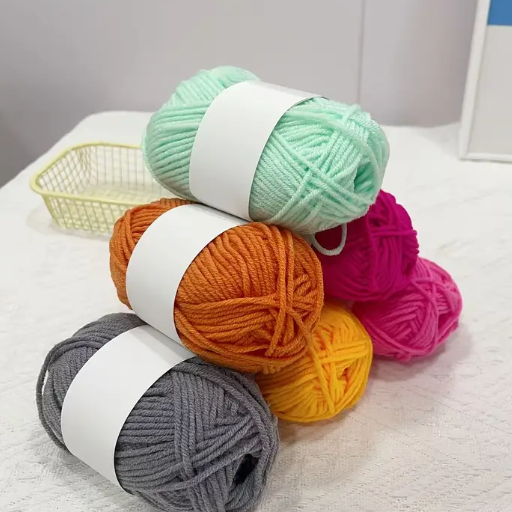
As a result, enhancing good sewing habits, which extends the usage of these textiles which in turn minimizes wastage, is essential for anyone. The tips below help achieve that very goal:
- Washing: Enzyme-free washing agents must be used. When cleaning, use cold water to minimize fiber breakage caused by the washing agent. Do not dry heavy loads in a washer.
- Drying: Avoid the use of a dryer whenever possible as it is known to consume more energy. Where a dryer is used on the other hand, heat it up at a low temperature since the materials will not shrink due to the heat as stretched fiber might be weakened.
- Stain Removal: React promptly after any spillage to ensure effective cleaning and avoid permanent marks on the fabric. Always practice caution by applying a smaller portion of your selected detergent or cleaner on your preferred area first.
- Storage: Store textile materials in a cool, dry area, free from direct sunlight, to prevent color fading and mildew development. Where textile is supposed to be kept for a longer period, use appropriate storage options such as cotton bags.
- Repairs: Do take measures to repair small tears, seams coming off on the edges, and similar problems as soon as they arise, in order to avoid big problems. If all that has been mend has failed, one is actually urged even to learn how to sew as it will make using the garment even longer in the long run.
With practicing the above actions, it is possible to make one’s textiles more resilient and at the same time be a responsible consumer.
How to Care for Acrylic Fabrics
Acrylic fabrics are in high demand due to their thin yet strong composition, ability to withstand attacks from clothes moths, and colors that never lose their fascination for long periods. It’s necessary to adopt some maintenance methods if the fabric is to look good and serve you for many years. Follow the guidelines below to ensure that maintenance is performed properly.
- Washing: Cleaning acrylic materials can be done smoothly in cold or lukewarm water. Train the use of soft, liquid-based soap, avoiding applying softening agents as they tend to harm chemical fabrics. Hand-washing is also as effective for delicate items.
- Drying: Air-drying for acrylic fibers is the best as any form of drying is likely to disturb the constituents of the fabric, should one choose to use a drying machine, use low-temperature regime for that. Also when drying, do not leave it out in the sun to prevent its’ fading away.
- Ironing: It can be damaged through heat and irons are of the appliances that can cause heat to rise. People therefore iron these fabrics with very cold temperatures. Enhance protection by placing a white plain press cloth between the fabric being ironed and the heat source, the iron , this will minimize the damage and unsightly damage.
- Storage: Safekeeping of acrylic pieces is done in areas where the temperature is low enough and the moisture is likewise low. Because of this, it is advisable to keep acrylic pieces in cloth-based see-through bags that have a cover that also allows for increased air flow.
- Pilling Prevention: Pills can form in acrylic fabric clothes. Use a fabric shaver regularly, in addition to a lint remover, to wear off these tiny lumps and give them a new look.
By pursuing these preventative strategies, it is possible to extend the wearability of acrylic wear and other such articles, tied to their aesthetic allocation and functionality over time.
Care Instructions for Polyester Fabrics
Fabrics that are made with polyester are appreciated for their sturdy feel as well as their resistance to wear and tear or any form of crumpling, making them very suitable for different uses. However, to maintain the condition of polyester cloth, best practice must be used:
- Washing Guidelines: Cleaning of clothing or material made of polyester can be done using lukewarm water normally less than 30–40°C (86–104°F). It’s a soft detergent that helps to remove dirt and stains from the fabric without negatively affecting the fibers. Avoid chlorine bleach would work okay as in the long run, it affects the clothing material.
- Drying Recommendations: Polyester does not take long to dry because of low degree of absorption. If possible, it is better to hang the clothes out to dry on a drying space. Alternatively, use a tumble dryer but at a low heat level in order to prevent the material from shrinking or from being destroyed in any way.
- Ironing and Crease Removal: Geometric properties of the threads that prevent them from being wrinkled, but if it is necessary to iron, then do it on a lower heat and by adding a pressing cloth between the iron and the garment, you would avoid melting or scorching the fabric.
- Stain Treatment: For stain treatment, although there are only rare cases when Polyester fabrics get visibly stained, it is a known fact that some stains, like oil-based or greasy stains, are tough. It is important, therefore, to presoak those areas before washing using a stain remover. The water-based remedies, such as dishwashing liquids, may be effective in this case, as they are well-suited for removing oil-based or greasy stains with ease.
- Storage Tips: Polyester fabrics should be stored in cool and dry places and away from sunlight. Constant exposure to UV sunlight may entail the weakening of the fabrics and color fading over time.
In conclusion, by following the instructions in this manual, users can significantly prolong the life of polyester fabrics while maintaining their original high-performance state and enhancing their aesthetic characteristics.
Reference Sources
-
Study on the Preparation of Superabsorbent Composite of Chitosan-g-poly (acrylic acid)/kaolin by In-Situ Polymerization
- Key Findings: This research developed a novel superabsorbent composite using chitosan, acrylic acid, and kaolin. The composite demonstrated excellent water absorption and retention properties, making it suitable for agricultural and environmental applications.
- Read more
-
Homogenous Grafted Poly (Acrylic Acid) Brushes on Ultra-Flat Polydimethylsiloxane (PDMS) Films by UV Irradiation
- Key Findings: This paper explored the grafting of poly(acrylic acid) onto PDMS surfaces to enhance their hydrophilicity and biocompatibility. The modified surfaces showed potential for biomedical applications.
- Read more
Frequently Asked Questions (FAQs)
Q: How do I choose between acrylic and polyester yarn?
A: Think of project scale and the additional attributes you would prefer this time for the yarn; whether acrylic or polyester yarn. Acrylic is the more elastic of the two and keeps the body warmer, hence its regular use in winter clothing. As a result, polyester is the ability to suit our needs in items where resistance to these demands is the major issue. When you are handling your project and you have some projects like this one that need some elasticity, the choice of polyester might be a good option. When it comes to deciding between the two, however, it should be underlined that the choice will be determined by other factors.
Q: Is acrylic or polyester better for outdoor use?
A: Outdoor polyester also known as acrylic, is good material, especially when it comes to applications such as coverings, clothing, etc., polyester is a material that is not natural man constructs it, and if formulated further, for example by the introduction of new technologies, it becomes an even higher level of an already existing technology. Again, among the two, polyester is preferred over acrylic, especially where the clothes will see the light of day, thanks to the favorable weather conditions. In clothes, it is a miracle; sales increase, the shelf life of the fabric increases. Nevertheless, if one is wearing outdoors, the relationship between the two, acrylic and polyester, changes dramatically; the appropriate choice depends on the person and occasion in question.
Q: What are the advantages of acrylic compared to polyester?
A: Acrylic possesses n merits compared to polyester with warm-hearted challenges staking a claim to the necklace. Acrylic is generally more yielding and provides a more comfortable sensation, making it more suitable for winter wear. Further, it does a great job in maintaining warmth, which is important in cold climates. However, it may not be worth its salt, as far as being tough as polyester which can resist wear and tear more efficiently. If you think about Engage’s niche, its again comfort and warmth — acrylic is worn less provided colder winter conditions.
Q: What environmental concerns should I be aware of with acrylic and polyester?
A: Shopping for clothes has been deemed as more inconvenient and complex by green shopping advocates. The reason is that it involves a number of activities, many of which are interrelated including, according to (Straughan and Roberts 1999), observing availability, selection, quality, and the incidence of price-rigging while the brands themselves represent the level of perceived conspicuous consumption. Secondly, there are related studies that have been conducted within other cultures, including the United Kingdom and Europe, which have also examined practices that are conspicuous in consumption. Finally, the mentor asked the consumer several questions, including what aspects of shopping she did not like. Recoils boss “forget it” and thread mes told to her “start from the beginning”. She learned that most people took sarees as a one size fits all.








